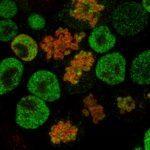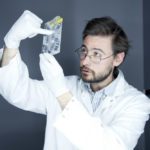Link to Pubmed [PMID] – 25053977
Epigenetics Chromatin 2014;7:11
BACKGROUND: Silencing of the paternal X chromosome (Xp), a phenomenon known as imprinted X-chromosome inactivation (I-XCI), characterises, amongst mouse extraembryonic lineages, the primitive endoderm and the extraembryonic endoderm (XEN) stem cells derived from it.
RESULTS: Using a combination of chromatin immunoprecipitation characterisation of histone modifications and single-cell expression studies, we show that whilst the Xp in XEN cells, like the inactive X chromosome in other cell types, globally accumulates the repressive histone mark H3K27me3, a large number of Xp genes locally lack H3K27me3 and escape from I-XCI. In most cases this escape is specific to the XEN cell lineage. Importantly, the degree of escape and the genes concerned remain unchanged upon XEN conversion into visceral endoderm, suggesting stringent control of I-XCI in XEN derivatives. Surprisingly, chemical inhibition of EZH2, a member of the Polycomb repressive complex 2 (PRC2), and subsequent loss of H3K27me3 on the Xp, do not drastically perturb the pattern of silencing of Xp genes in XEN cells.
CONCLUSIONS: The observations that we report here suggest that the maintenance of gene expression profiles of the inactive Xp in XEN cells involves a tissue-specific mechanism that acts partly independently of PRC2 catalytic activity.


